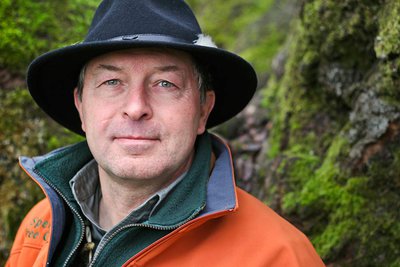
I made a date recently with arborist Alby Thoumsin to chat about how to choose trees. “I bet you called me now because it’s the best time to plant trees,” he volunteered when we met. “You can’t do better.” So which trees do you recommend, I asked. “It depends what people want. They should think about what purpose they want the tree to serve — privacy, shade, fruit, or a striking specimen.”
OK, let’s suppose they don’t want fruit. “Then they are probably interested in trees that are what I call bulletproof,” Thoumsin said. “If you want a tree that’s beautiful, hardy and disease resistant, not picky about soil and won’t be a giant tree, think about Persian ironwood.” Also known as parrotia, it has terrific fall color, and Thoumsin reckons it grows about 45 feet high by 20 feet wide.
Prompted for more bulletproof trees, Thoumsin suggested Oregon ash, green ash, honey locust and giant sequoia. Oregon ash grows well in a variety of sites, and while he conceded that the leaves are often diseased by mid-summer, “It doesn’t slow them down.”
On the smaller side, Thoumsin likes Lavalle hawthorn (30 x 25), which fits under most power lines. Overhead power lines are something people should think about, and so is soil type. “Look around and see what does well in your neighborhood. Also do the homework about how large trees get, and allow extra for the Willamette Valley! Everything grows bigger here.”
I asked Thoumsin what grows well in heavy clay besides Oregon ash. He suggested tupelo (black gum; it has good orange and red fall foliage) and, to my surprise, sourwood (oxydendrum), an elegant small tree that has good fall color and tassels of fragrant little flowers in summer.
On the subject of small trees, “If you lost a Japanese maple to verticillium wilt and are looking to replace it, Japanese snowbell (Styrax japonica) is similar in size,” Thoumsin said. “It tolerates poor soil, and grows well in most situations.” The more unusual Styrax obassia has larger leaves and a more open form, and looks a bit more interesting. Styrax is “not reported as susceptible” to verticillium wilt. Sometimes a large shrub like a witch hazel might serve the purpose, or even a large rhododendron, Thoumsin pointed out. A stewartia is another good alternative to replace a lost maple, but it is rather slow-growing and needs “well-drained and somewhat fertile soil.”
Since several kinds of small maple are really popular, I asked Thoumsin if all maple species are susceptible to verticillium. “Pretty much,” he said, although red maple seems somewhat less so. But that’s a larger tree than I had in mind, and anyway, as Thoumsin added, it’s over-planted. “If you want to know if it’s safe to plant a maple, you can have your soil tested for verticillium wilt,” he suggested. “Get in touch with the Oregon Extension Service in Corvallis.”
Thoumsin is keen on hornbeams, too. The variety most often planted is a narrow-crowned form of European hornbeam (40 feet). If you want a more natural form, look for American hornbeam, which also puts on a better show in fall.
I asked Thoumsin about dogwoods, as I’d heard they are verticillium resistant. He confirmed this, but said they can be finicky, needing good soil and good light. And, unfortunately, a debilitating anthracnose afflicts most non-shrubby dogwoods, particularly the Eastern U.S. native (Cornus florida) and our own Pacific dogwood.
Thoumsin suggests the hybrid “Eddie’s White Wonder,” which is somewhat resistant to anthracnose. He also likes cornelian cherry (Cornus mas; it’s not a cherry). “It’s a bit unusual, and it blooms very early.” It has many small yellow flowers on bare branches.
Thoumsin is acutely aware that our rainfall may be declining, or is at least becoming less dependable, so naturally we talked about drought-tolerant trees. Oaks tend that way, he said, and he singled out Hungarian oak, a tree I’d never heard of. Apparently it has strikingly long, heavily lobed leaves. And, of course, there is our native Oregon white oak. It’s a bit slow for some purposes, but not as slow as people think, he said.
Thoumsin named some other drought-tolerant choices, all pretty large: sequoia, incense cedar, ponderosa pine, madrone. Prompted for something smaller, he came up with strawberry arbutus, olive, crape myrtle and chitalpa. The latter, a hybrid between catalpa and something called chilopsis, is well adapted to poor soils, according to Thoumsin, and very drought tolerant. A bonus is the long summer flowering period.
Any advice for successful planting? “Water is the crucial element. Water deeply and infrequently, and don’t count on your lawn’s irrigation system to do the job — it’s not nearly enough.” For the first two summers, Thoumsin suggests 15 gallons per week per inch of trunk diameter, measured 6 inches above grade. You can start weaning your tree off the heavy watering after the second year.
If you have any questions about trees, call Sperry Tree Care at 461-1737 and schedule a free one-hour consultation.
Rachel Foster of Eugene is a writer and garden consultant. She can be reached at rfoster@efn.org